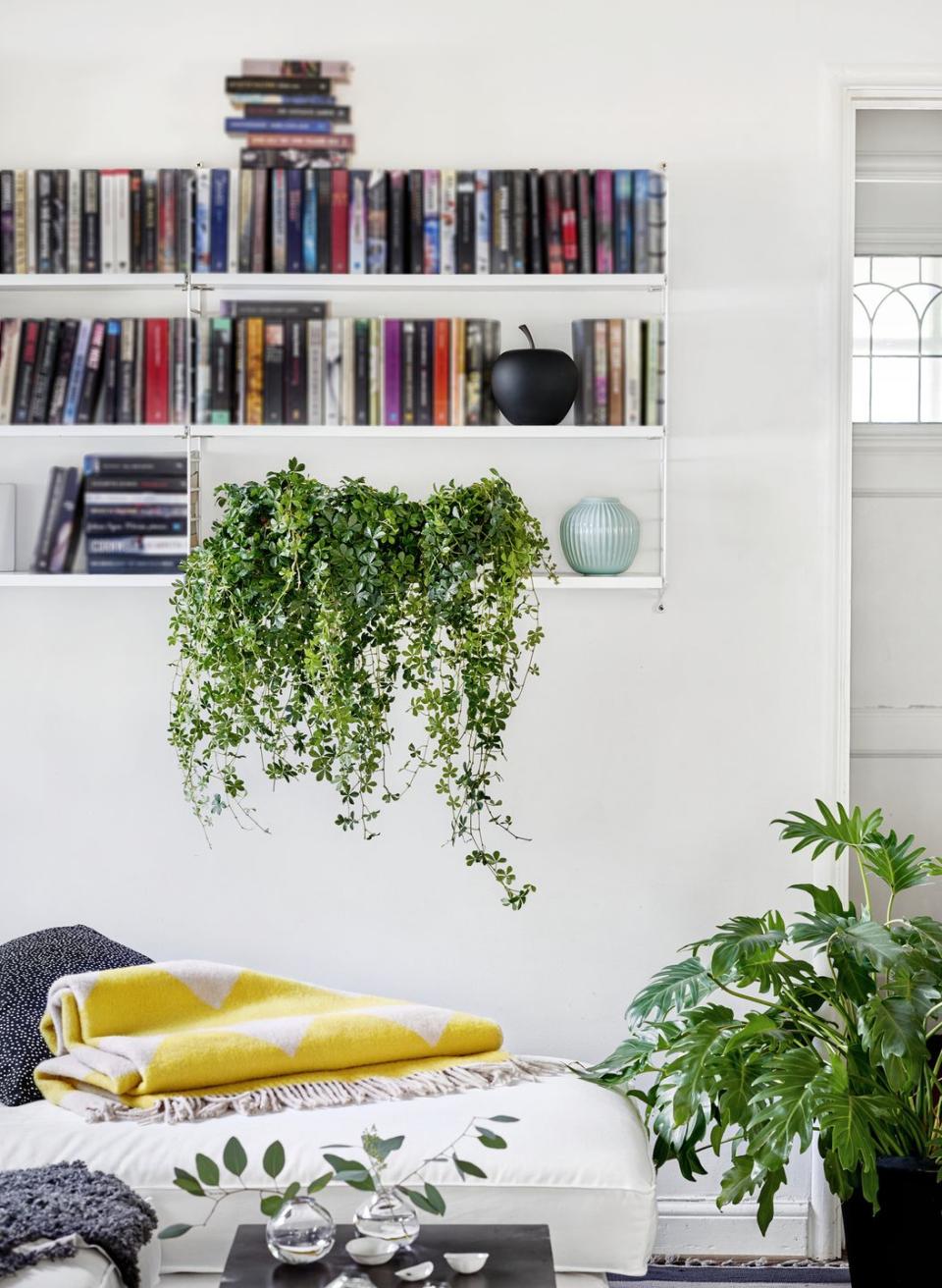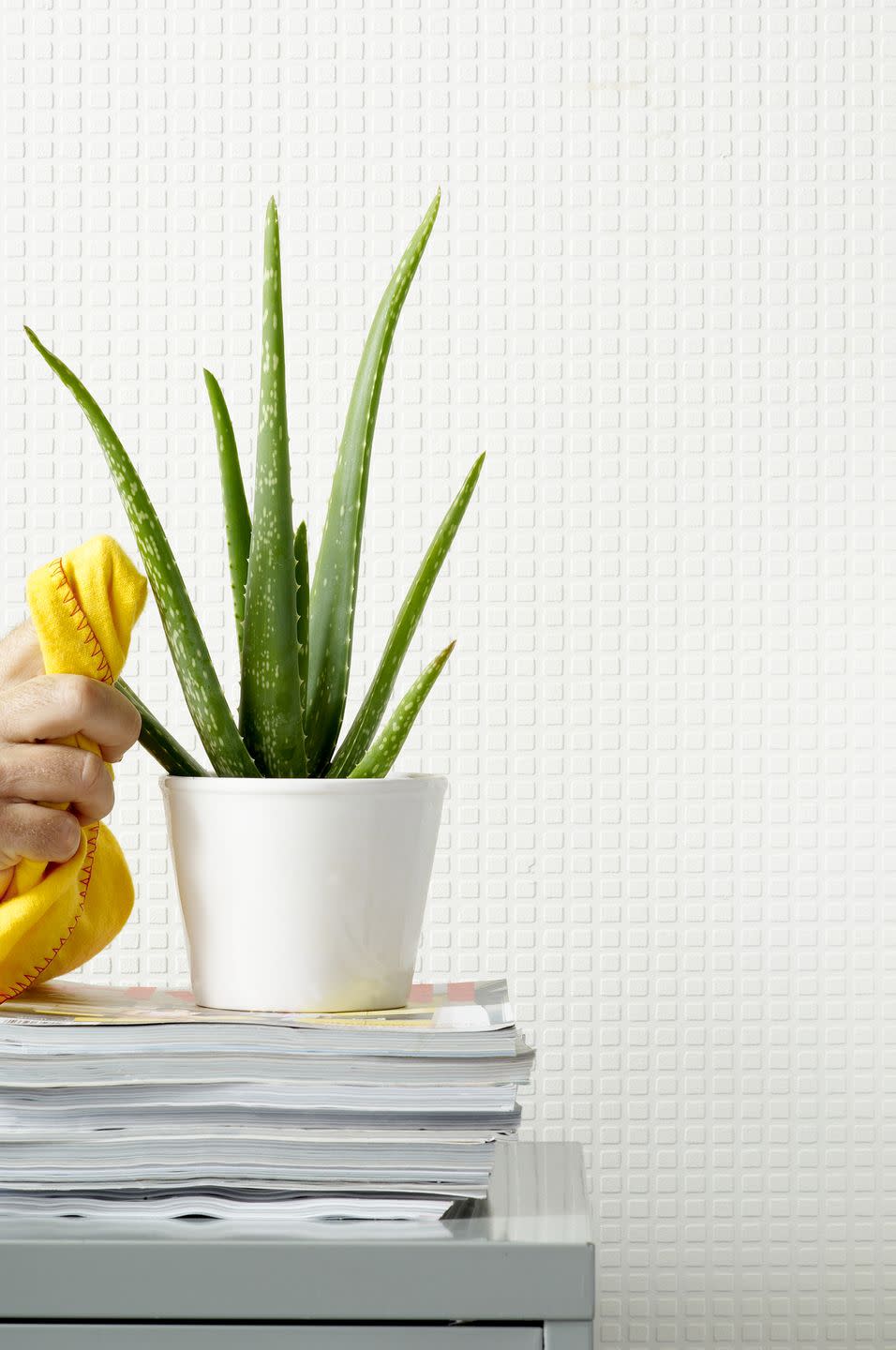No, Your Plants Aren't Dying—They Just Go Dormant for Winter

Now that winter's in full swing, you might notice your houseplants taking a bit of a lackluster turn. Not only have they seemingly stopped growing, but you could also see leaves die, too, or even fall off. The good news? That's totally normal. And it doesn't mean your plants are dying, either. It just means they've gone dormant for winter. Think of it as hibernation, but for your leafy green friends.
If you're still worried about your plants, we've got you covered. Joyce Mast, Bloomscape's resident plant expert (her official title is "Plant Mom") tells House Beautiful all about plant dormancy and what to expect.
"At this time, the plant is resting," Mast says. "This is important to their survival, in order to regrow each year."
Dormancy is a period of rest, that, as Mast explains, starts in the fall when your plants sense the days becoming shorter thanks to the accompanying reduced light levels. "Once a plant is dormant, foliage growth may slow down, and in some cases, a few leaves may fall off, but the roots will continue to grow and thrive."

Is Your Plant Dormant, or Actually Dying?
According to Mast, there are three easy tests you can do to check if your plant is in its rest period, or if it's actually in need of some extra TLC.
The Snap Test
"Select the end of a branch or stem the size of a pencil," Mast instructs. "Then, hold the branch and bend it sharply back on itself." If it's dead, the stem will snap without much effort, and the inside will look dry. If it's alive, it'll bend easily, and when the stem ultimately splits open, you'll see moist wood inside.
The Scratch Test
Another common method is using a knife or your fingernail to scratch the bark on a young stem. "If you see green, it's alive," she notes. "If it's brown, work your way down the stem to see if there's green further down by the soil, as the plant may show signs of life as you near the roots." In this case, you'll want to cut off the dead stems about an inch or two above that growth.
Root Inspection
"Even if the plant is looking dead above the soil line, a dormant plant will have healthy roots," Mast says. If both the snap test and the scratch test don't help you determine anything, try removing the plant from the pot and checking to see if the roots look healthy or if they’re completely rotten or shriveled up.

So, Do Dormant Plants Need Special Care?
You should reassess your plant care routine come winter, whether your plants appear to be dormant or not. "During the winter, tropical indoor plants are at the mercy of drafty windows, drying furnaces, and colder temperatures in general," Mast says. But with a little help from these dos and don'ts, your plants will make it through.
Do Cut Back on Watering
As their growth rate slows down, Mast notes that most plants actually need less water in the winter, since overwatering can lead to root rot. But that doesn't mean you should ignore your plants, either. "I always suggest pushing your finger about two inches down into the soil and only water if it feels dry," she says. "When you do water, be sure to water thoroughly. The roots need the water." Of course, different plants have their own individual preferences when the seasons change, so it's worth it to do your research.
Don't Let Dryness Take Over
"Humidity is key," Mast says. "Most plants are sensitive to dry air, so your plants will appreciate extra humidity during the winter months when many homes turn dry due to heaters and fireplaces."
There are a few easy ways you can keep your plants humid and happy, though. First thing's first: Group your plants together. "It creates a micro-climate, since plants naturally transpire by expelling water from their leaves," Mast explains. Some other tips? Use a humidifier near your plants, or leave a tray of water out nearby to add more moisture to the air. You can also mist your plants, but Mast notes that you need to be consistent and do it often.
Do Keep Them Away From Drafts
If your plants are by the window, you may need to move them to avoid any drafts and to keep them away from cold window panes, to protect them from getting too chilly. On the flip side, you don't want your plants to overheat, either. You want your plants to stay in an environment that's around 65 to 75 degrees and no lower than 50 degrees at night. "Just be conscious of where your plants are sitting," Mast advises.
Don't Fertilize Your Plants
If winter boredom has set in and you think now's a good time to finally fertilize your plants, you should hold off. "There really isn’t a reason to fertilize your plants during the winter months because they are in a resting phase," Mast says. "At this time, plant food can do more harm than good, because they will not use up the food and it will upset the natural growth cycle of the plant."
Do Dust Your Plants
"Plants need dusting too!" Mast says, so be sure to keep your plant clean and dust-free. Why? Your plants are more prone to getting dusty during dormancy, and thanks to lower humidity levels as well, they basically become a perfect breeding ground for spider mites, insects, and other pests. They like to hide out in dusty leaves, and it'll be much harder for you to notice them, too. "Wipe your plants’ leaves regularly with a damp cloth and be sure to remove any dead or yellowing leaves with a pair of clean, sharp scissors," Mast advises.
Shop These Easy-Care Plants
Ready to add to your houseplant collection? Try these basically un-killable plants.
Follow House Beautiful on Instagram.
You Might Also Like

